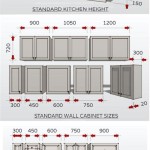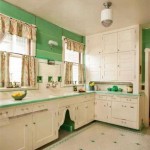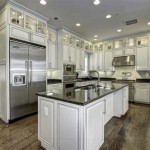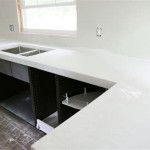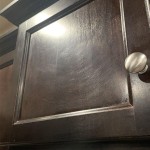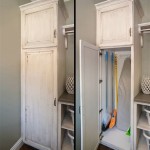How to Replace the Bottom of a Kitchen Cabinet Under the Sink
The bottom of a kitchen cabinet under the sink is prone to water damage. This is due to leaks from the faucet, sink, or even the garbage disposal. Over time, persistent moisture can cause the wood to warp, rot, or even collapse. If you notice signs of damage, it's important to address the issue before it worsens. Replacing the bottom of the cabinet is a relatively straightforward DIY project, and this article provides step-by-step instructions to help you get the job done.
1. Preparing for the Replacement
Before you begin, gather the necessary tools and materials. You'll need a saw, drill, screwdriver, measuring tape, wood glue, screws, wood filler, sandpaper, paint or varnish, and a new piece of wood to replace the damaged bottom.
The first step is to remove the cabinet door and any contents that may be obstructing access to the bottom. Then, carefully disconnect the plumbing beneath the sink to prevent any accidental water damage during the process. Make sure to shut off the water supply to the sink before disconnecting any pipes.
Next, remove the old bottom panel. If it is secured with screws, simply remove them. If it is glued or nailed in place, you may need to carefully pry it off using a pry bar. Be sure to take note of how the old panel was attached, so you can replicate the method when installing the new one.
2. Measuring and Cutting the New Bottom Panel
Now, it's time to measure and cut the new bottom panel. Carefully measure the length and width of the cabinet opening where the bottom panel goes. Allow for a little extra room for a snug fit, roughly 1/4 inch on each side.
Use a pencil to mark the dimensions on the new piece of wood. Then, use a saw to cut the wood to the exact measurements. It is recommended to use a circular saw or a jigsaw for better accuracy. Ensure the cut edges are smooth and free of any splinters.
3. Installing the New Bottom Panel
Once the new bottom panel is cut to size, it's time to install it in the cabinet. If the old panel was secured with screws, you can simply use the same screws to attach the new panel. If the old panel was glued or nailed in place, you need to use a different method.
If the old panel was glued, you can use wood glue to secure the new panel, but it's recommended to use construction adhesive for extra strength. Apply a thin coat of adhesive to the bottom edge of the cabinet opening. Carefully position the new panel in place and gently press it down to ensure good adhesion.
If the old panel was nailed in place, you can use new nails or screws to secure the new panel. Be sure to use screws or nails that are long enough to penetrate the wood and provide a secure hold.
4. Finishing Touches
After the new bottom panel is securely installed, use wood filler to fill any gaps or cracks. Allow the filler to dry completely, then sand it smooth with sandpaper. Once the filler is smooth, paint or varnish the new bottom panel to match the rest of the cabinet.
Finally, reconnect the plumbing under the sink and turn the water supply back on. Make sure to test for leaks before reinstalling the cabinet door and any contents that were previously removed.
Replacing the bottom of a kitchen cabinet under the sink is a simple fix for a common problem. By following these steps, you can restore your cabinet to its original condition and avoid further damage.

Under Sink Cabinet Repair Our Bright Road

How To Replace Rotted Sink Base Cabinet Floor Bottom Easy Home Mender
When Repairing The Bottom Of Cabinet Below Kitchen Sink Do I Need To Take Damaged Section Out Or Can Simply Put Plywood On Top It Quora

How To Replace Rotted Wood Under A Kitchen Sink Diy Guide Dengarden

How To Replace Particle Board Under Sink Kitchen Infinity

How To Replace Rotted Sink Base Cabinet Floor Bottom Easy Home Mender

How Can I Replace A Kichen Island Sink Base Cabinet Hometalk

How To Replace A Kitchen Sink Base Cabinet Vevano

Replace Sink Cabinet Floor

How To Fix Rotted Cabinet Bottom Floor Much Sink Install House Remodeling Decorating Construction Energy Use Kitchen Bathroom Bedroom Building Rooms City Data Forum

